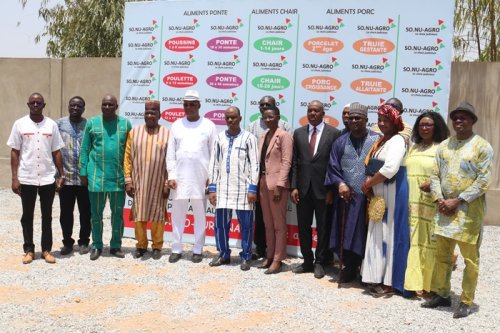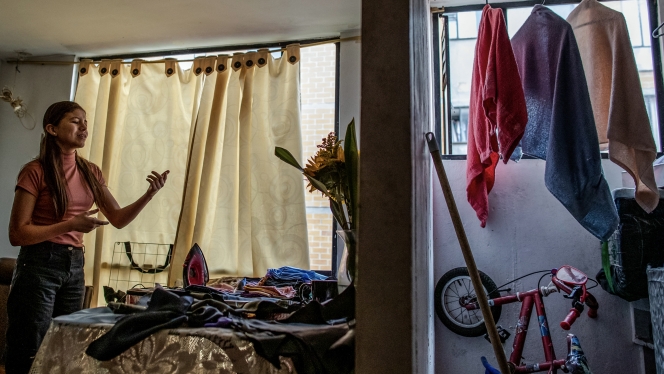![An important black ground painting of Mahakala Brahmanarupa, Tibet, late 17th century]()
Lot 201. An important black ground painting of Mahakala Brahmanarupa, Tibet, late 17th century. Estimate US$ 400,000 – $600,000. Photo Christie's Image Ltd 2016
The great dark-skinned deity in the guise of an old Indian Brahman, seated over a prone corpse on a lotus base at center and surrounded by the fiery flames of pristine awareness, holding aloft his thigh-bone trumpet, flanked by deities from his retinue, with Begtse at below center and a lama and Vaishravana in the corners, with figures from the Sakya lineage above, each identified by inscription in a beautiful hand, very finely painted with lavish use of color against the black background - 58 x 38 in. (147.3 x 96.5 cm.)
Provenance: Zimmerman Family Collection, by the 1990s
Literature: M. Rhie, et al., Wisdom and Compassion: The Sacred Art of Tibet, 2000, p.447, fig.201 (77a)
N. Bazin, Rituels Tibétains: Visions Secrétes du Ve Dalai Lama, 2002, p.105, cat.46
Himalayan Art Resources (himalayanart.org) item no.31363
Exhibited: Wisdom and Compassion:
Kunst und Ausstellungshalle der Bundesrepublik Deutchland, Bonn, Germany, May 9 – August 25, 1996; Centre Cultural de la Fundacion ‘la Caixa”, Barcelona, Spain, October 1 1996 – 14 January 1997; Tobu Museum of Art, Tokyo, Japan, February – April 1997; The Yamaguchi Prefectural Museum of Art, Yamaguchi City, Japan, May – July 1997; Chiba City Museum of Art, Chiba City, Japan, August – September 1997; Sun Yat Sen Memorial Hall, Taipei, Taiwan, January – March 1998; Koihsiung Museum of Fine Art, Kaohsiung, Taiwan, March – May 1998; Taiwan Museum of Art, Taiwan, June - August 1998
Rituels Tibétains: Visions Secrétes du Ve Dalai Lama, Musee National des Arts Asiatiques - Guimet, 5 November 2002 - 24 February 2003
Notes: As described by Marilyn Rhie and Robert Thurman, “This is the finest and largest thangka yet to surface of Brahmanarupa” (Wisdom and Compassion, The Sacred Art of Tibet, 1996, p. 447, cat. no. 201). This unique form of Mahakala appears as an Indian Brahman, dark blue-black in color, with bushy hair, eyebrows and beard befitting asadhu living in the forest. He wears a green dhoti and multiple sashes secured around his waist by a bone-ornament girdle, and a human skin draped over his shoulders. He is adorned by further bone ornaments around his ankles, arms and torso, a white bone mala around his wrist, a skull tiara, and a belled sacred thread, all befitting his sadhu holy status. He holds a thigh-bone trumpet aloft, a skullcup against his left thigh, and a spear against his left shoulder flying a banner decorated with Chinese “long-life” symbols. Next to him are a golden vase with curved knife and a sword.
On either side of his wisdom fire are four firece female deities of his retinue – Kalachandi, Heruki, Kali and Singali – each with wild orange hair, holding a curved knife and skullcup, and cavorting amongst their own flames. Their inscriptions give further verses about their power in accomplishing the four magical activities, in punishing demons, in preventing disunity, and in prospering the virtuous.
Directly above is orange Manjuvajra Guhyasamaja embracing Sparshavajra at center, with the crescent moon and sun on either side. On the right are Risula Dakini, Dragpa Gyaltsen (white hair on a cushion), Ngorchen Kunga Zangpo, Doringpa (on a white lion) and Palden Chogyong. On the left side is Nagarjuna (with his seven-headed snake hood), Nyen Lotsawa (upper left corner), Chokyi Gyaltsen, Konchok Penden, and finally Sanggye Puntsog.
At bottom center is red-skinned Begtse, striding in alidhasana over a horse and corpse on a lotus base. He is wearing golden armor and holding a sword, spear with a banner decorated with a dragon, and a tall stalk of coral. On either side is his son, Asanga, Lord of Life, riding a blue wolf, and his partner, Jamdrel, Mistress of Life, riding a bear.
At bottom right is Vaishravana riding a lion. At the very bottom left is a donor figure holding a manuscript and seated before a table with offerings. Above him is the 37th Great Abbot of Ngor Ewam Monastery seated beneath a parasol, with an attendant, practicing Brahmanarupa’s ritual invocation.
In this extensive and beautifully composed iconography a Sakya initiate might recognize the connections Brahmanarupa has to the Sakya lineage. Nyen Lotsawa (upper left corner), a great Tibetan translator, received two great gifts from Risula Dakini (top right of center): the Manjuvajra Guyhasamaja teachings and also the initiation into the Chaturmukha Mahakala. At the same time, she gave Nyen Lotsawa a dark-skinned Brahman as a servant, who was none other than Chaturmukha Mahakala. In Sakya tradition, where it is inappropriate to show the wrathful form of Chaturmukha Mahakala to the uninitiated, the tradition arose for painting this deity in his Brahamanical servant form. As a main protector deity for the Sakya order, Brahmanarupa is often shown with Shri Devi and Panjarnata Mahakala on many Sakya paintings.
Christie's. INDIAN, HIMALAYAN AND SOUTHEAST ASIAN WORKS OF ART, 15 March 2016, New York, Rockefeller Plaza






































